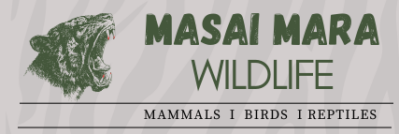- Common Names: Defassa Waterbuck
- Swahili Name: Kuru
- Maasai Name: Olmooinko
- Scientific Name: Kobus ellipsiprymnus defassa
- Size:
- Head-Body Length: 2.8 meters (9 feet)
- Shoulder Height: 1.4 meters (4½ feet)
- Gestation: 39–41 weeks
- IUCN Status: Least Concern. The Defassa Waterbuck is not globally threatened, although localized declines may occur due to habitat loss and hunting in some regions.
Recognition and Appearance
The Defassa Waterbuck is a large, striking antelope with a shaggy coat and distinct gender-based differences in appearance. Males are darker, displaying long, curved, and heavily ringed horns, which can reach up to 100 cm (39 inches) in length. Females, on the other hand, are reddish-brown and lack horns. Both sexes possess a white rump patch, which distinguishes them from the related Ellipsen Waterbuck.
Waterbuck have a greasy coat, which is often attributed to sweat glands under the skin that give them a foul smell and provide waterproofing. This has led to the myth that their meat is inedible, though this isn’t strictly true.
Habits and Behavior
Waterbucks are gregarious, typically found in large herds dominated by females and their young, led by a single dominant male. Subordinate males may also be present, though they frequently form their own bachelor herds, which are typically found a short distance from the main herd. These bachelor groups often engage in mock-fighting, practicing horn clashes that help determine future hierarchy.
Defassa Waterbucks are highly territorial, and dominant males defend their herds from other males with imposing displays of their horns and body language. When faced with predators such as lions or leopards, waterbucks are known to intimidate them by staring, stamping their feet, and issuing a loud snort as a warning signal to others in the herd.
Diet and Feeding Habits
The Defassa Waterbuck is primarily a grazer, preferring medium-length grasses but occasionally feeding on other vegetation such as herbs and leaves. Unlike many other antelope species, they are heavily reliant on fresh water for drinking and are often found near rivers, lakes, and other water sources.
Despite their name, Defassa Waterbucks are not exclusively confined to wetlands and can be found in a variety of habitats, including wooded savannas, open plains, and grassy floodplains.
Where to Find in Masai Mara
In the Masai Mara, Defassa Waterbuck are commonly found in open and wooded savannas, particularly near water sources such as rivers and marshes. Their reliance on water makes them more visible around waterholes, where they gather in herds, especially during the dry season when water becomes scarcer.
Conservation Status
The Defassa Waterbuck is listed as Least Concern by the IUCN, largely due to its wide distribution across Africa and its adaptability to various environments. However, like many other large herbivores, localized populations face threats from habitat loss, poaching, and competition with livestock for resources.
Interesting Facts
- Waterbuck have evolved a clever defense mechanism against predators by producing greasy, foul-smelling sweat that waterproofs their coat and may also make them less appealing as prey.
- They are known to stand their ground against predators like lions, using their impressive size and powerful horns to defend themselves, especially when protecting young calves.
- Unlike other antelope, waterbucks are often seen in family herds, and both males and females will defend their calves from threats, creating a tight social structure.
The Defassa Waterbuck is a wonderful example of a gregarious yet defensive antelope that thrives in the lush savannas of the Masai Mara, where it contributes to the rich biodiversity of the region.
